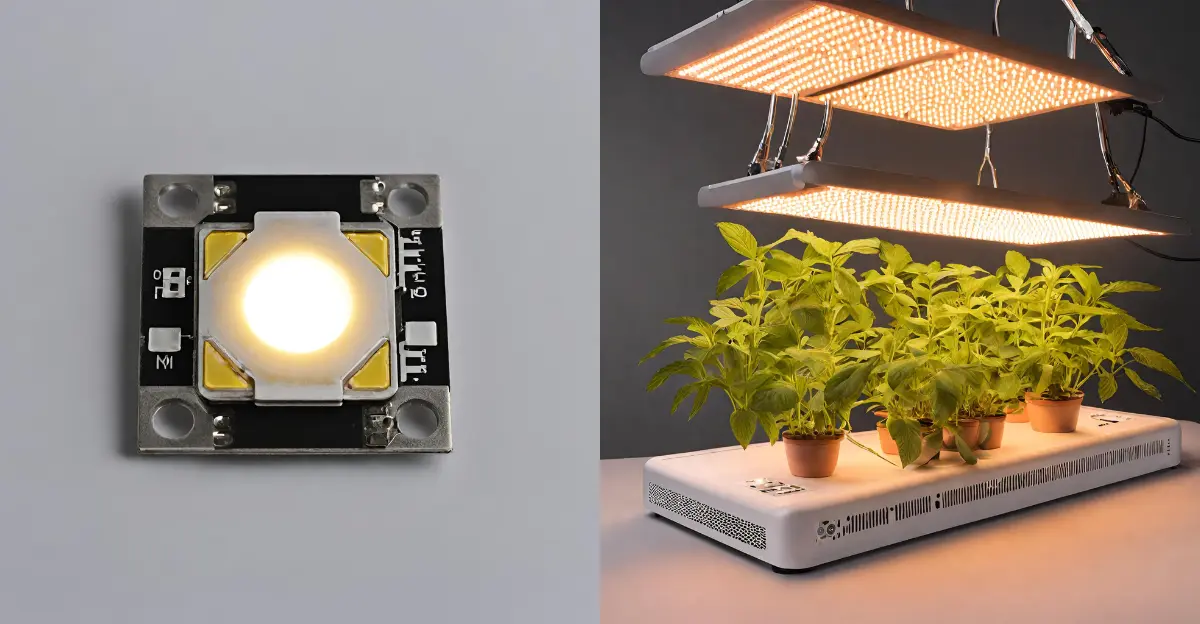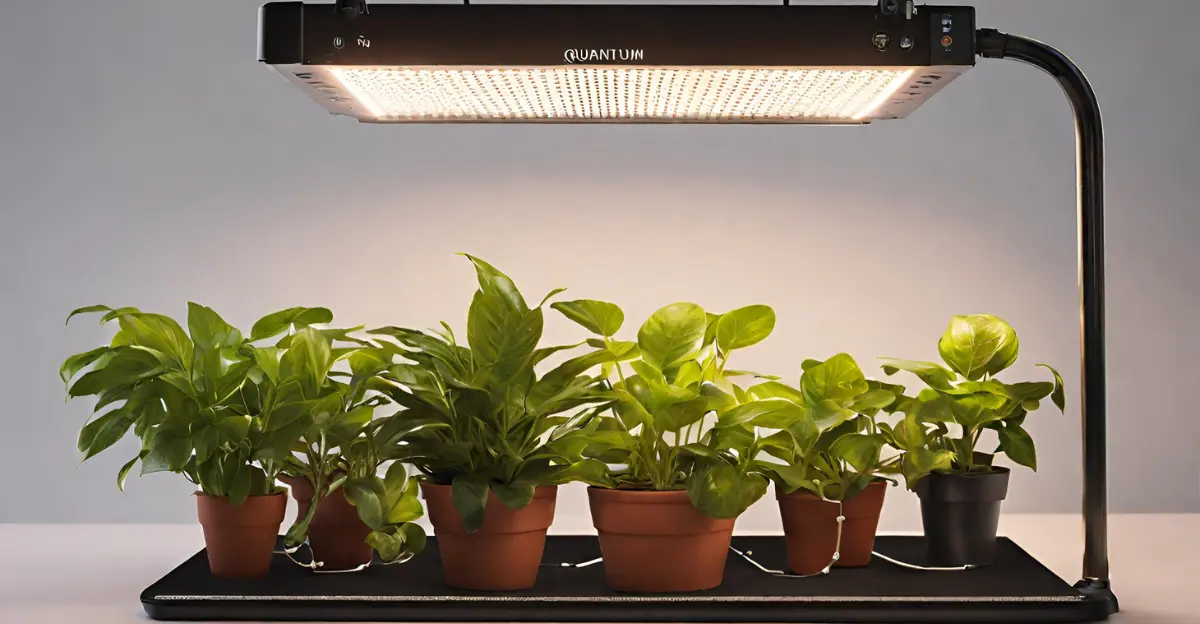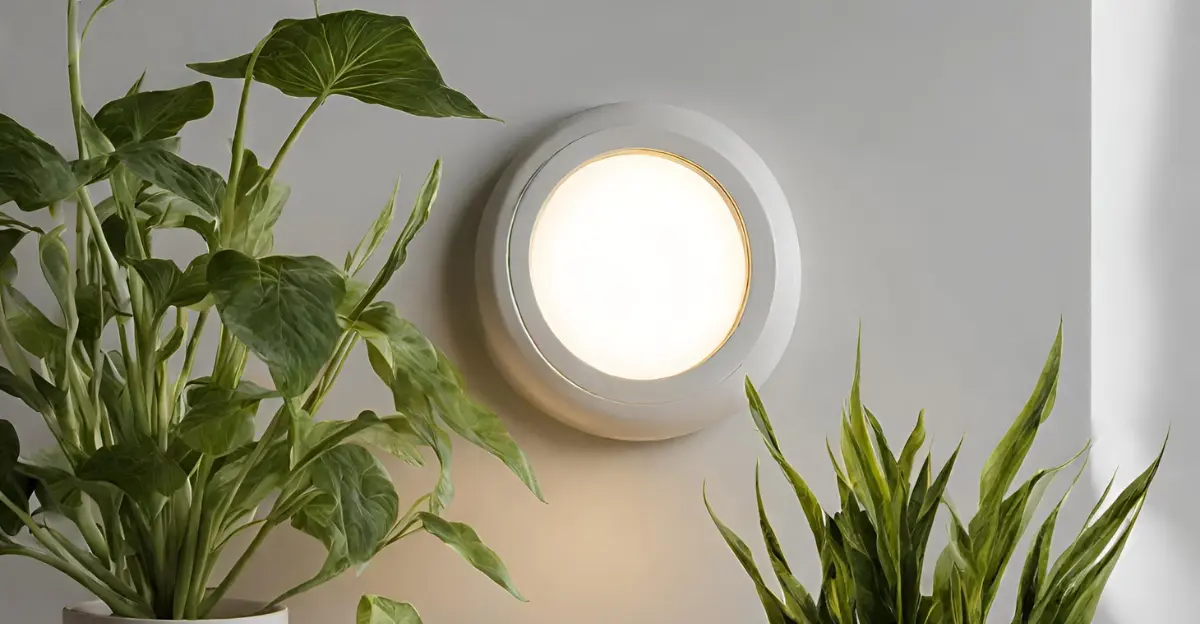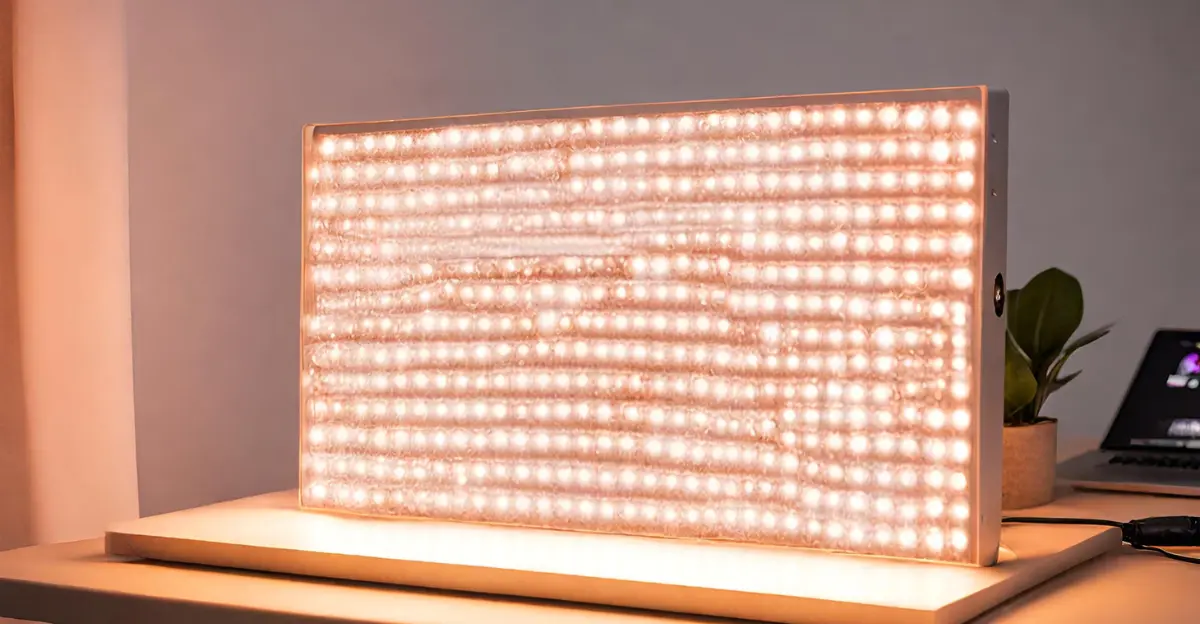Quantum Board vs COB LED Grow Lights: My Honest Breakdown

Trying to decide between COB vs Quantum Board LED grow lights for your indoor growing space?
This breakdown cuts through the jargon to shed light on the key differences between these cutting-edge grow lighting technologies.
How Quantum Board Grow Lights Work

At the core of a quantum board grow light lies a heavy-duty PCB or “printed circuit board” capable of efficiently dispersing heat.
Mounted on this board is an array of mid-power LED chips, commonly the Samsung LM301B or LM561C diodes.
The brilliance of quantum boards is in how these individual LED chips are spread out across the entire PCB area.
This spacing allows the heat from each diode to dissipate easily, eliminating the need for bulky fans or complex active cooling systems.
SIDENOTE: Some active cooling may still be needed depending on the grow setup.
But the magic doesn’t stop there!
Quantum boards leverage a meticulously calculated mix of LED chips emitting different wavelengths like red, blue, and white.
When combined at precise intensities, they create lush full-spectrum white light that mimics natural sunlight.
To further enhance light uniformity and penetration into every nook of your canopy, many quantum board designs incorporate precision secondary optics.
Pros of Quantum Board Grow Light
Cons of Quantum Board Grow Light
How COB Grow Lights Work

COB (aka Chip-On-Board) LEDs take a different approach to packing LED power. Rather than dispersing smaller chips, they concentrate their potency into a single, brilliant cluster.
The “COB” in the name refers to this dense array of ultra-tiny LED chips packed insanely close together on the same base.
This tight clustering allows COB LEDs to generate staggeringly high lumen output from one intense source – perfect for cranking light levels during crucial flowering phases.
However, cramming those diodes so close together creates significant heat issues.
To keep temperatures in check, COB arrays require advanced heat sink designs coupled with active cooling fans – a tradeoff for that unrivaled intensity.
To spread the COB’s pinpoint output into a smoother, more uniform beam, manufacturers coat the LED cluster with a phosphor layer.
This phosphor coating glows when energized, helping diffuse the concentrated LED light into an all-encompassing radiance.
Pros of COB Grow Lights
Cons of COB Grow Lights
While both leverage the power of LEDs in different ways, quantum boards optimize for broad uniform coverage while COB LEDs unleash blinding intensity.
With that out of the way, let’s get into the comparison.
Light Intensity Comparison

Here’s the bottom line: when it comes to concentrated light intensity, COB LEDs reign supreme – but only in a smaller direct footprint.
Light Output Efficiency
In terms of light output efficiency (lumens or PAR value per watt consumed), quantum board grow lights outshine COB LEDs.
A top-tier quantum board can achieve an amazing 2.7 μmol/J of photosynthetic photon flux, while the best COBs max out around 2.2-2.5 μmol/J.
Higher efficiency translates to more light intensity from less electricity – a win for your utility bills and carbon footprint.
Number of LEDs and Power
We find quantum boards hosting hundreds of relatively low-powered LEDs (often 0.2-0.5W each) densely spread across large boards.
In contrast, in a compact cluster, COBs concentrate their firepower on far fewer high-wattage LED chips (1-15W each).
This amps up the intensity locally while sacrificing some efficiency in the process.
Light Distribution Uniformity
When it comes to uniform light distribution across your canopy, quantum boards boast an inherent advantage due to their expansive LED arrays.
The light spreads evenly from every corner of the board for consistent intensity.
COBs create an intense central hotspot directly underneath the unit, with intensity dropping off towards the edges.
Reflectors help diffuse the light, but can’t quite match quantum boards for all-around coverage uniformity.
Coverage Area Capabilities
Speaking of coverage area, quantum boards readily combine into larger setups to evenly illuminate bigger grow spaces.
Their modular nature keeps intensity consistent even over commercial-scale grows.
Meanwhile, focused COBs are often better suited for small-to-medium spaces or supplemental side lighting.
Multiple units may be needed to adequately cover larger areas without uneven bright/dim spots.
Light Quality Comparison
Spectrum is crucial, as plants require different wavelengths at different growth stages.
Top quantum boards like the Samsung LM301B emit a broad spectrum including red, blue, and green – ideal for all phases from veg to flower.
COBs deliver light more concentrated in the red and blue ranges, with some (not all) lacking certain green wavelengths plants crave.
Quantum boards are typically fixed in their spectrum configuration.
However, some COB fixtures allow tweaking the color temperature by mixing diodes, providing limited customization of the spectrum output.
This flexibility can be beneficial if your plants need an extra bump of certain wavelengths.
SIDENOTE: A fixed broad spectrum is generally very effective for most situations.
Moving beyond the spectrum, we have color rendering.
QB’s full spectrum light renders plant colors beautifully, with high CRI values ensuring an accurate, natural look.
While COBs can still achieve solid color rendering, their reddish/bluish tint arguably makes plant colors appear less true-to-life.
Finally, uniformity across the coverage area sets these technologies apart.
Quantum boards’ many dispersed diodes create extremely even light distribution and spectrum consistency from edge to edge.
No hot or dim spots!
In contrast, COB’s intense point-source nature results in the spectrum and intensity varying more towards the edges unless using multiple units.
Energy Efficiency Comparison
All those tightly packed COB diodes create dangerous freakin’ heat levels that need robust active cooling systems to handle. We’re talking heatsinks and sometimes, noisy fans just to keep them from burning out.
QBs spread their LEDs out so they run cooler and can get away with basic passive cooling.
A good QB setup can last 50,000+ hours pumping out 90% of its initial output. Lots of COBs can start to fade hard before 50k hours if their cooling sucks.
Listen, I’m not saying COBs are worthless pieces of crap.
They clearly shine for applications where you need retarded levels of intensity in a small area.
But if whole-room efficiency and low operating costs are your top priorities, then high-end quantum boards are simply the way to friggin’ go. Don’t let the flashy COB marketing bullshit fool you on that front.
Initial Cost Comparison
On average, quantum board LED grow lights tend to be straight-up cheaper than COB LED lights that produce a similar light output.
You’re generally looking at prices ranging from $80 to $1,500+ for quality quantum boards.
In contrast, COB LED grow lights are usually priced higher right off the bat compared to their quantum counterparts.
Sure, COB prices can vary based on the brand and output capacity. But if upfront costs are your top priority, quantum boards straight-up take the W for now.
That said, COBs do have some unique advantages that may justify their higher price tags for certain applications – more on that later.
Both of these bad boys bring serious advantages – and compromises – to the cost equation.
QBs may be cheaper upfront with mind-blowing efficiency for lower operating expenses over time.
But COBs arguably justify higher prices by packing unrivaled intensity perfect for focused flowering/resin boosts.
Conclusion and Final Recommendations
Here’s my honest take on when to choose each:
Go with quantum board LED grow lights if…
Opt for COB LED grow lights if…
Hopefully, this head-to-head breakdown gave you the info you need to make that choice with confidence.
FURTHER READING:
– What Color Light Is Best for Plant Growth (2024 Guide)
– What Color Light Is Worst for Plant Growth (2024 Updated)
Meet your guide
Dhruvir Zala